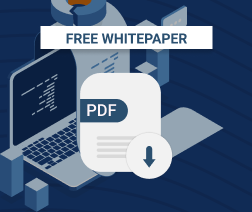It's easy for an MSP business owner to feel overwhelmed when attempting to streamline their processes for managing IT documentation. Especially as IT sprawl continues to expand, it becomes seemingly more difficult every day to standardize documentation and manage all the different knowledge bases and items that an MSP needs to track and run the company effectively and efficiently.
For that reason, many MSPs turn to IT documentation software to help. A strong documentation software provider can help an MSP standardize documentation, create knowledge bases, manage passwords, and track devices — among many other tasks. In doing this, they ensure their teams have access to the information they need in order to develop, deploy, administer, and even troubleshoot the software across customer environments. What’s more, a standardized console provides consistency of service and operations if there's a change in employees or any other form of transition over time. In short, it becomes a central repository for all an MSP’s documentation needs — without the headache.
However, as with any tool, MSPs should choose the vendor carefully and ensure that the tool has all the capabilities they might need to fully support the needs of their teams and their customers. The logical place to start the selection process is to carefully consider their needs and the types of documents that need to be stored. From there, they can figure out the parameters for the tool that makes the most sense for them.
What are some of those standard features that an MSP should consider? Some common IT documentation software features are organizing notes, documents, and wikis. Some also offer searchable knowledge databases or even the capability to add audio or video files. Some IT documentation tools also leverage automation to create and upload documentation. Additionally, for MSPs that offer developer services, software documentation tools can help document all aspects of that development for others that may need it, including how the product is designed, how to use specific software, how to troubleshoot any issues, how to deploy the software, and other important information.
On top of this, some IT documentation tools offer add-on features that can be used directly by the client — thus adding value to the MSP service catalog. For instance, some tools enable clients to store, create, and maintain their passwords in a secure app — helping them increase their security against one of the most common cyberattack vectors. Some can also allow clients to upload their documents or even create checklists to help get things done.
Once an MSP has chosen the best product, it should ensure that its teams leverage best practices. One of the most important best practices is to see to it that the procedure manual is straightforward and can be easily understood by anyone that might need to use it in the future. To help with this, an MSP should ensure all internal stakeholders are involved in creating the manual and incorporate their feedback, as well as any that the customer might have. Finally, MSPs should ensure that the documentation is regularly updated is always up to date.
By ensuring proper documentation and choosing the right software documentation tools, an MSP can guarantee that the people and processes within their organization are thoroughly aligned as they work to support their customers, even when there are transitions in teams or issues that must be resolved. Armed with those tools, an MSP can ensure that it is truly setting itself and its clients up for success.





